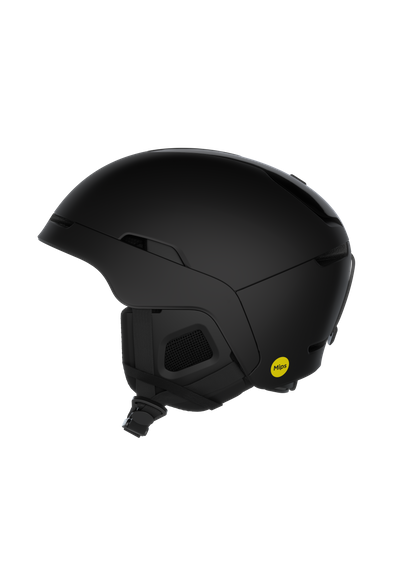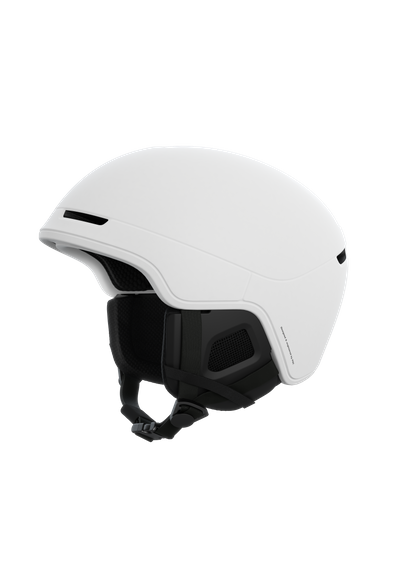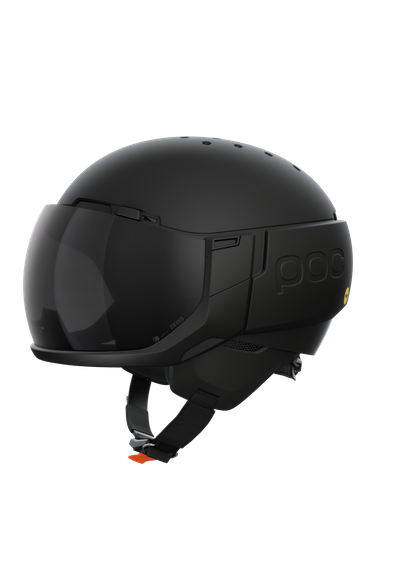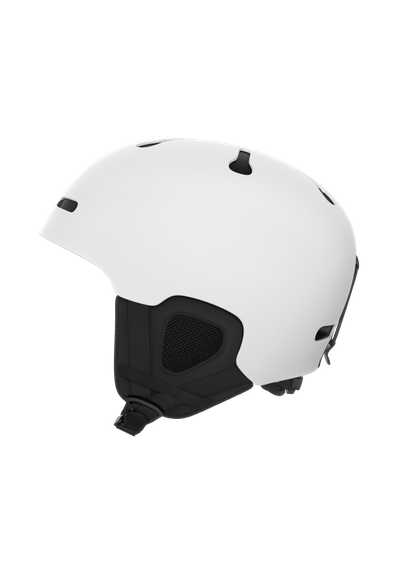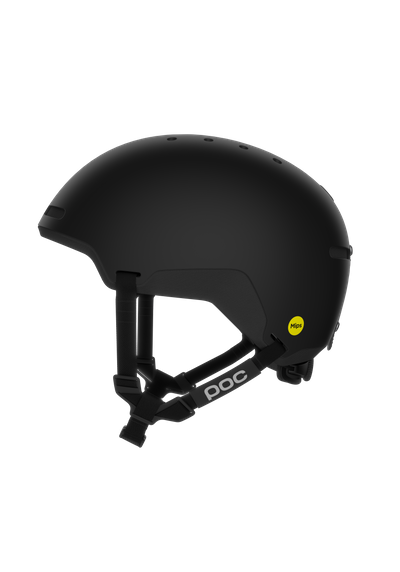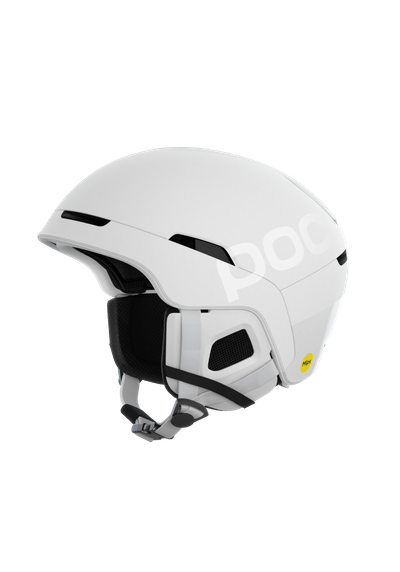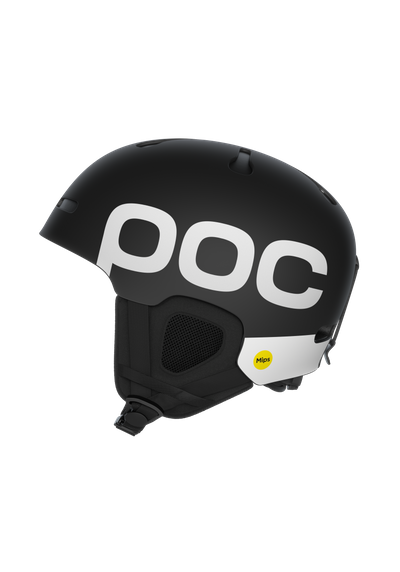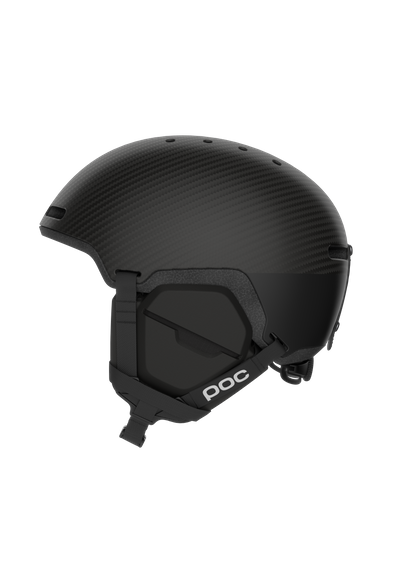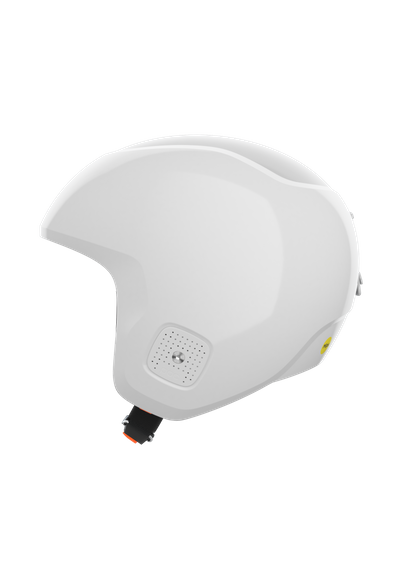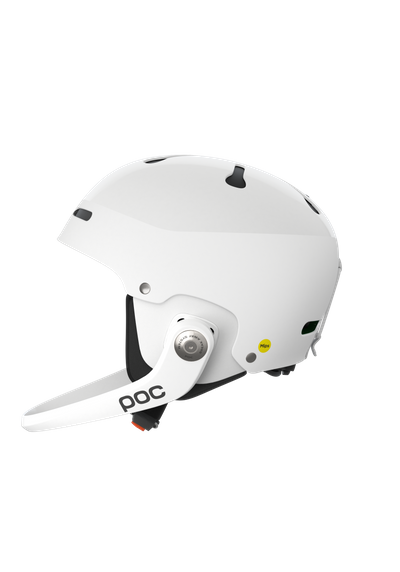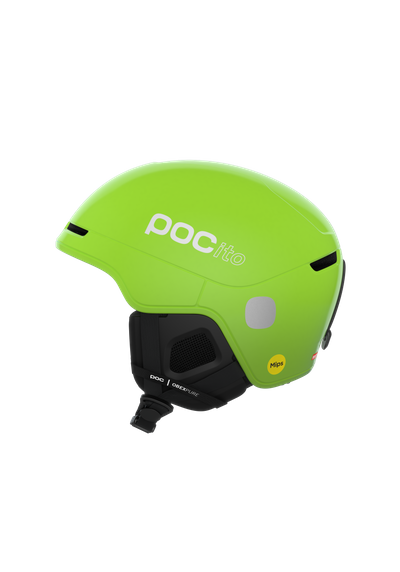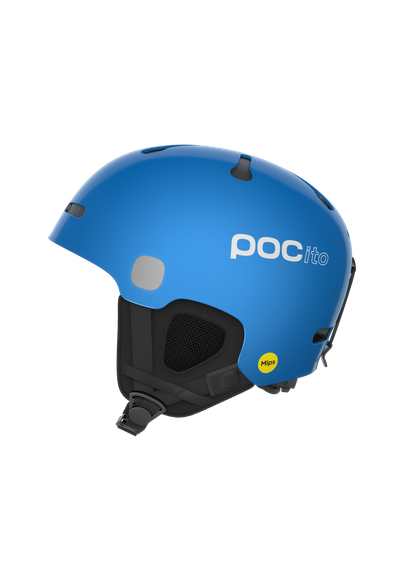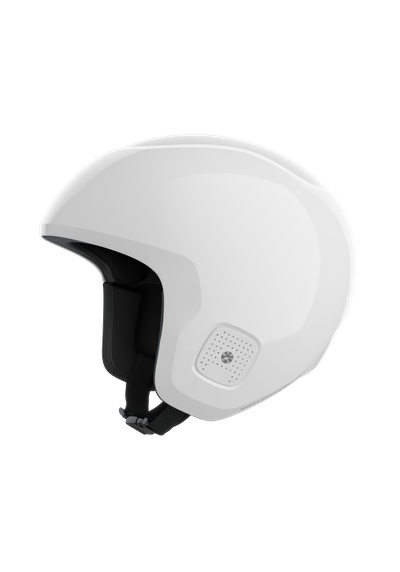How to choose your snow helmet
As protection specialists, we frequently receive stories and feedback from customers who have lived to tell the tale. Instances where head injuries have been reduced or avoided thanks to wearing a helmet. Today’s scientific studies, coupled with the anecdotal evidence and personal experiences of so many riders, have ended the once-fierce debate over the importance of a helmet for skiing or snowboarding.
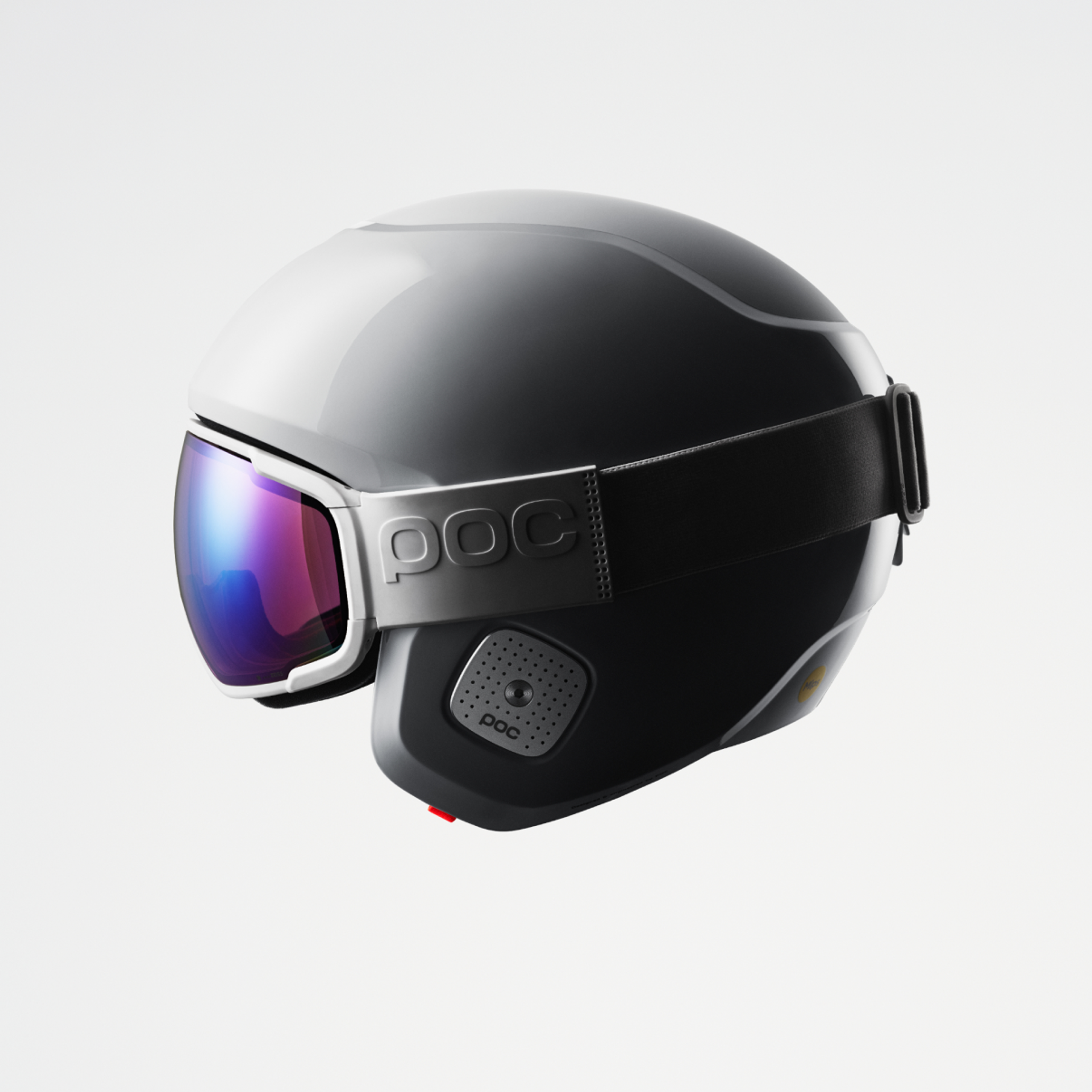
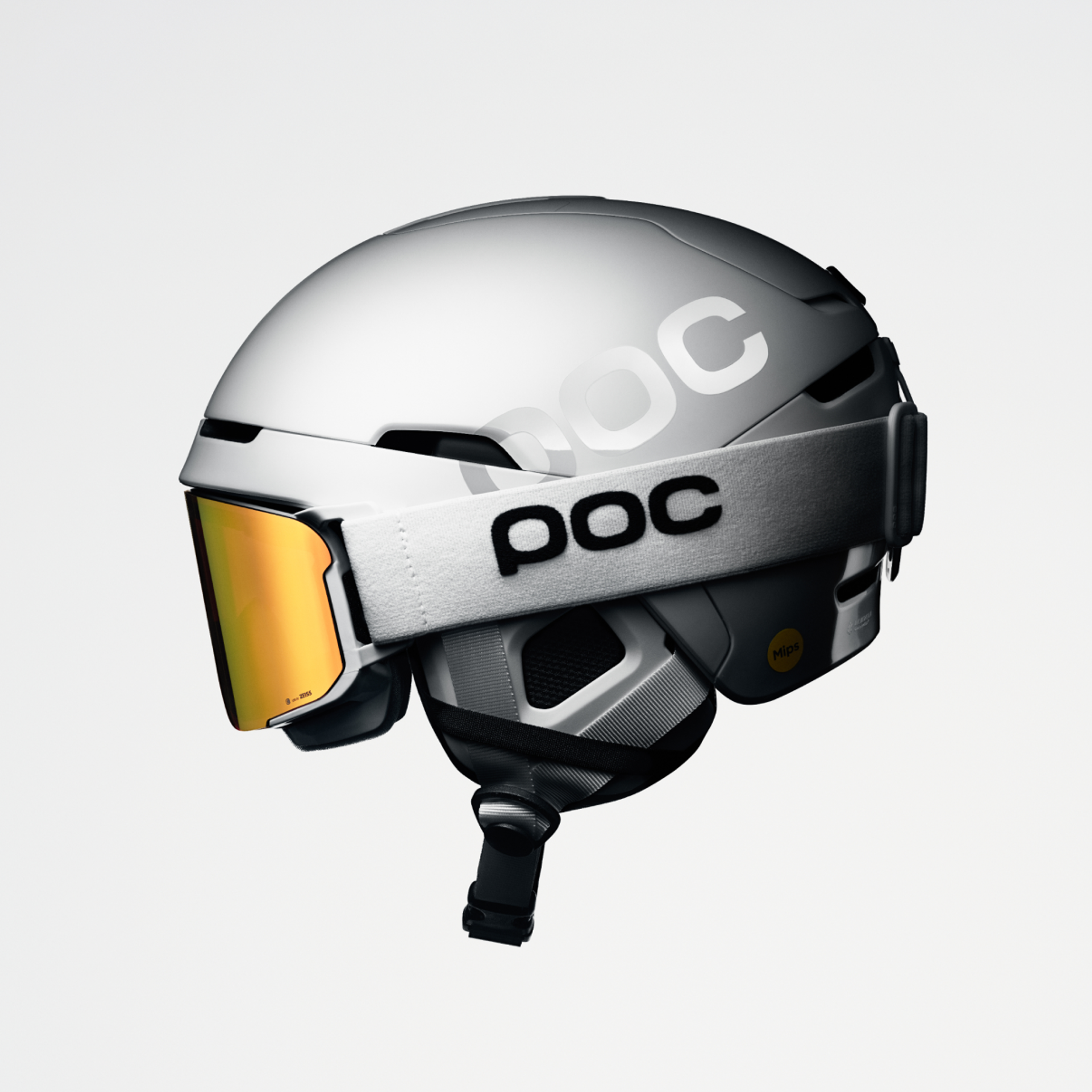
Choose a helmet and goggles tailored for the kind of skiing you do. Left: Ski Race helmet the Skull Dura Comp and the Zonula goggles. Right: Freeride and all-mountain helmet the Obex Mips and the Nexal goggles.
Choosing the right helmet for your needs does not need to be a daunting process. An understanding of how helmets differ from one another makes it easier to make the right choice.
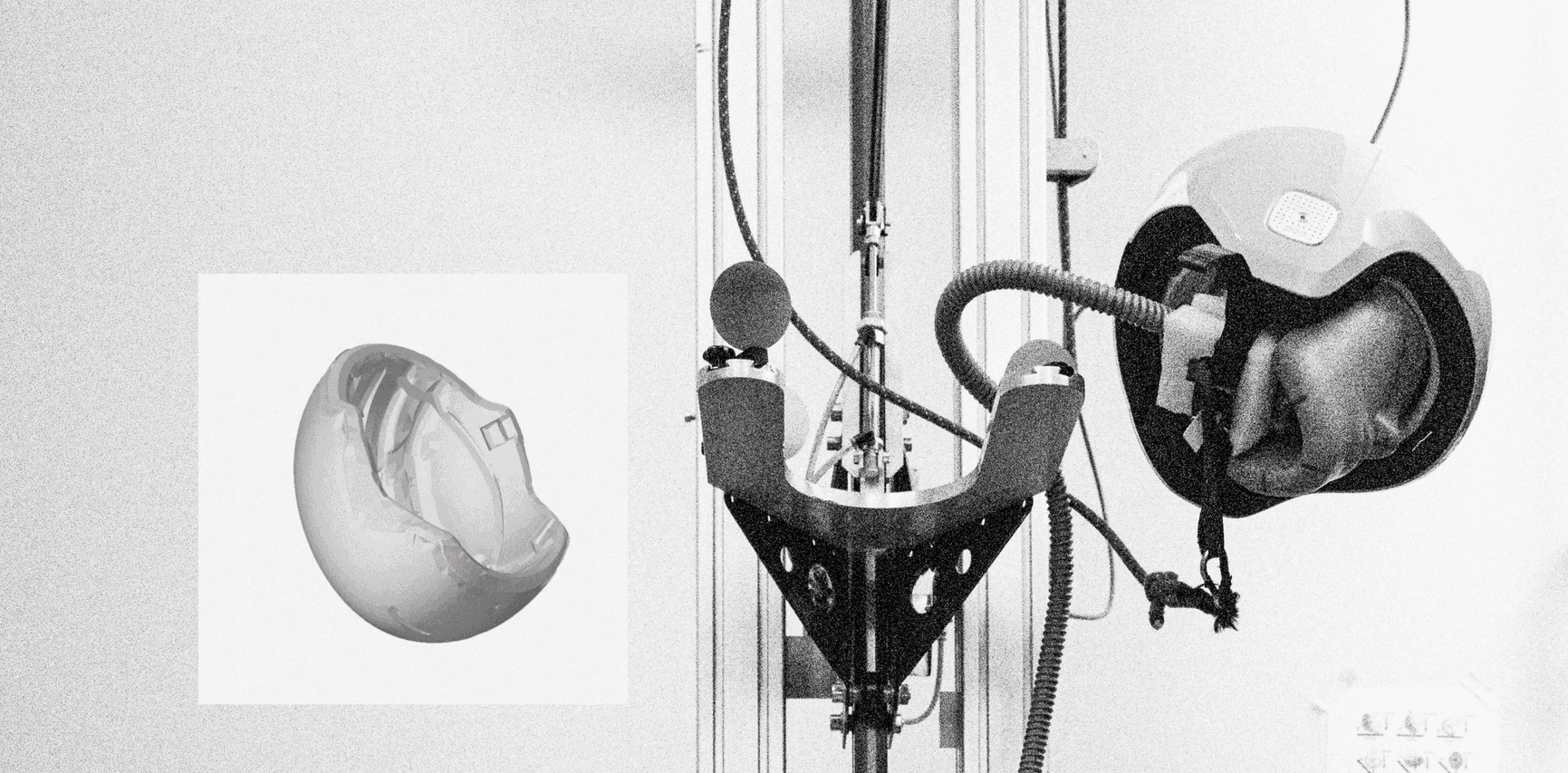
Computer modelling and Finite Element Method analysis processses are used from an early stage of the helmet development process, long before helmets are physically produced and drop tested.
HELMETS MADE TO EXCEED THE STANDARDS
All respectable snow helmets meet strict safety standards.
All POC helmets follow a strict drop test regime to measure impact force absorption, among other things. But before they are even produced, we use a range of modelling processes, including Finite Element Method (FEM) analysis to determine the best shape, thickness and density of each part of a helmet.
Every POC helmet meets the standards laid out in your region (one or more of ASTM F2040, CE EN 1077, AS/NZ 2063 or FIS RH 2013), so you can be confident that you will be protected by whichever helmet you choose.
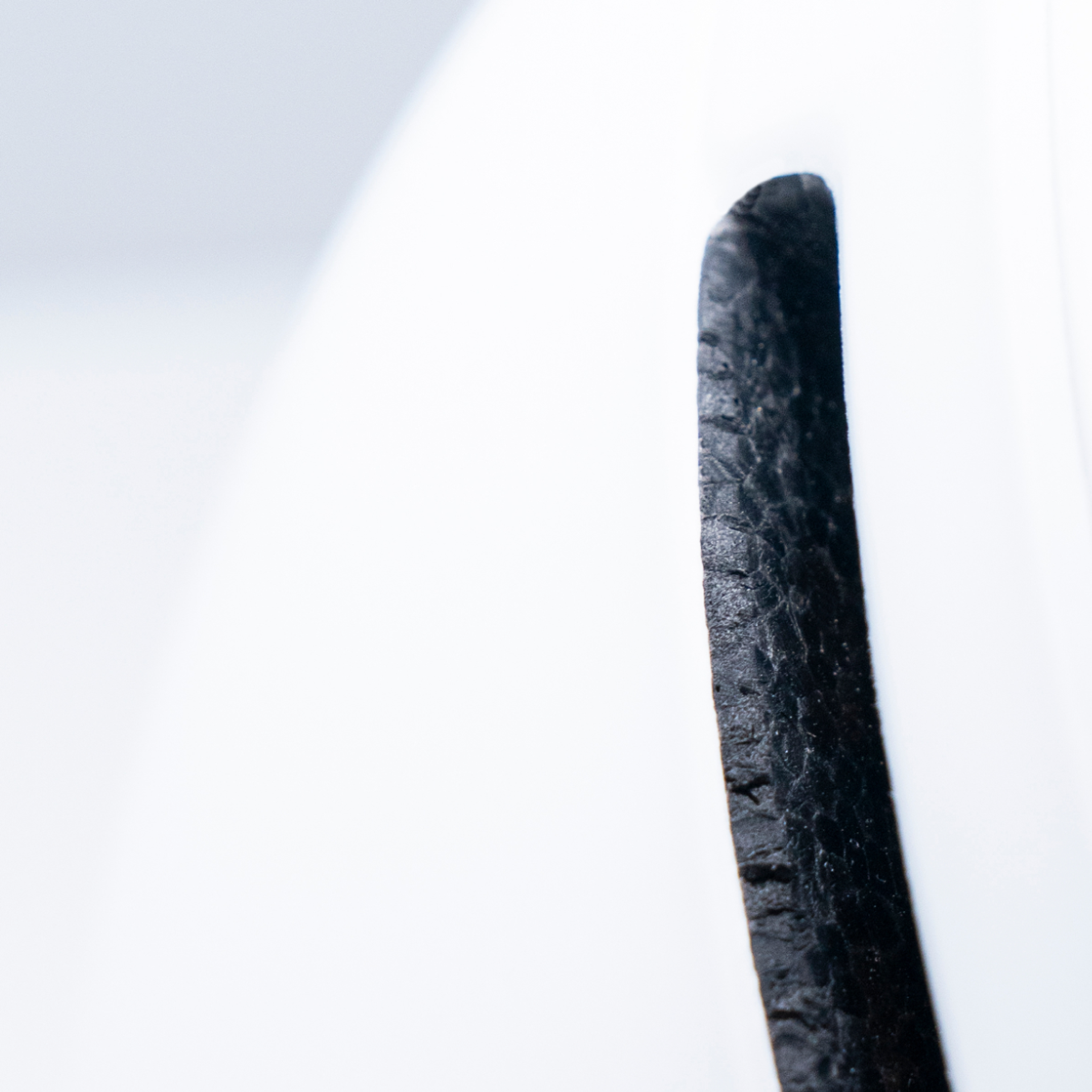
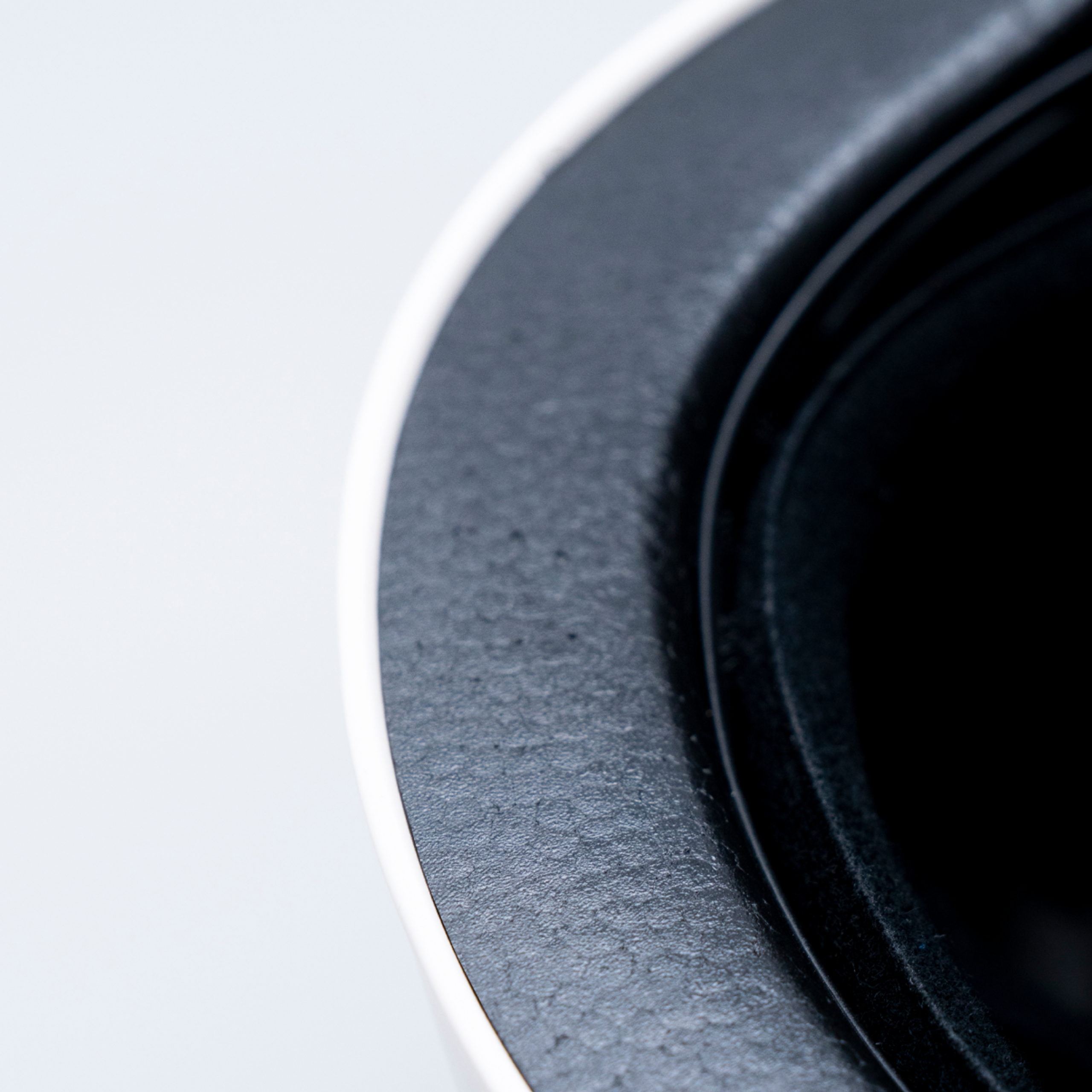
Left: A lightweight helmet shell provides durability and structural stability for the lightweight EPS liner underneath. Right: Multi-impact EPP will return to its original shape if pressed lightly.
HELMET MATERIALS
Whether creating helmets for ski racing, freeride or recreational use, the materials used may vary slightly. In general, race helmets use EPP (expanded polypropylene) as the liner, whereas freeride and recreational helmets use EPS (expanded polystyrene). EPS is lighter, making it more comfortable for longer periods of use, and is optimised to efficiently absorb forces from a single impact. EPP, although heavier, offers multi-impact protection.
We choose all the materials in our helmets to balance protection with performance and usability. Every helmet is formed to give exceptional functionality in specific usage environments.
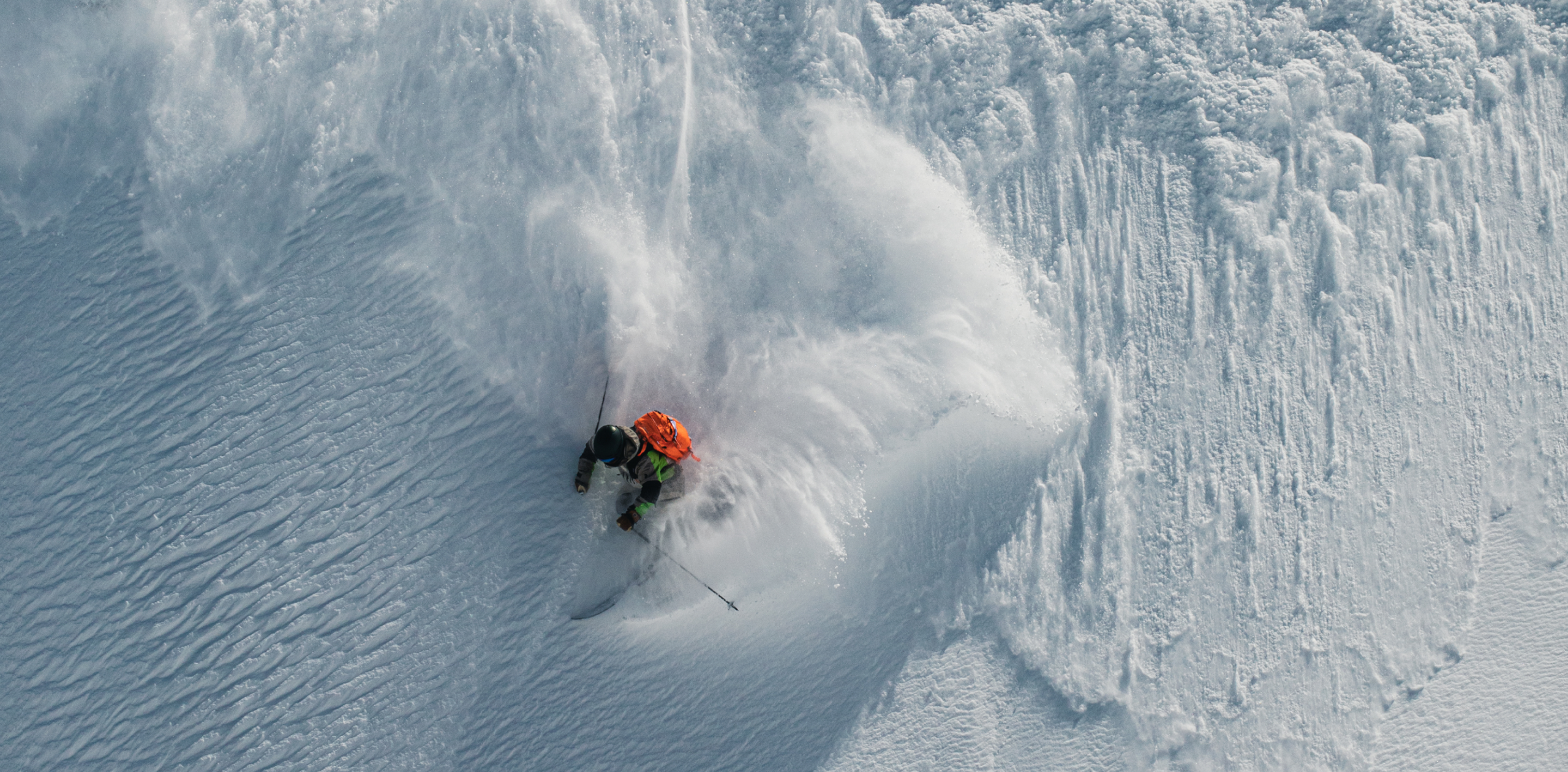
The environment in which you will use the helmet determines which helmet will be best for you.
WHAT HELMET DO I NEED?
When deciding what helmet is right for you, think about where and how you will use the helmet.
Consider factors like ventilation, what technology is integrated into the helmet, adjustability for different riding conditions, and whether you would typically be using the helmet on- or off-piste; for racing or for leisure.
All of these factors can influence which helmet is best for you.
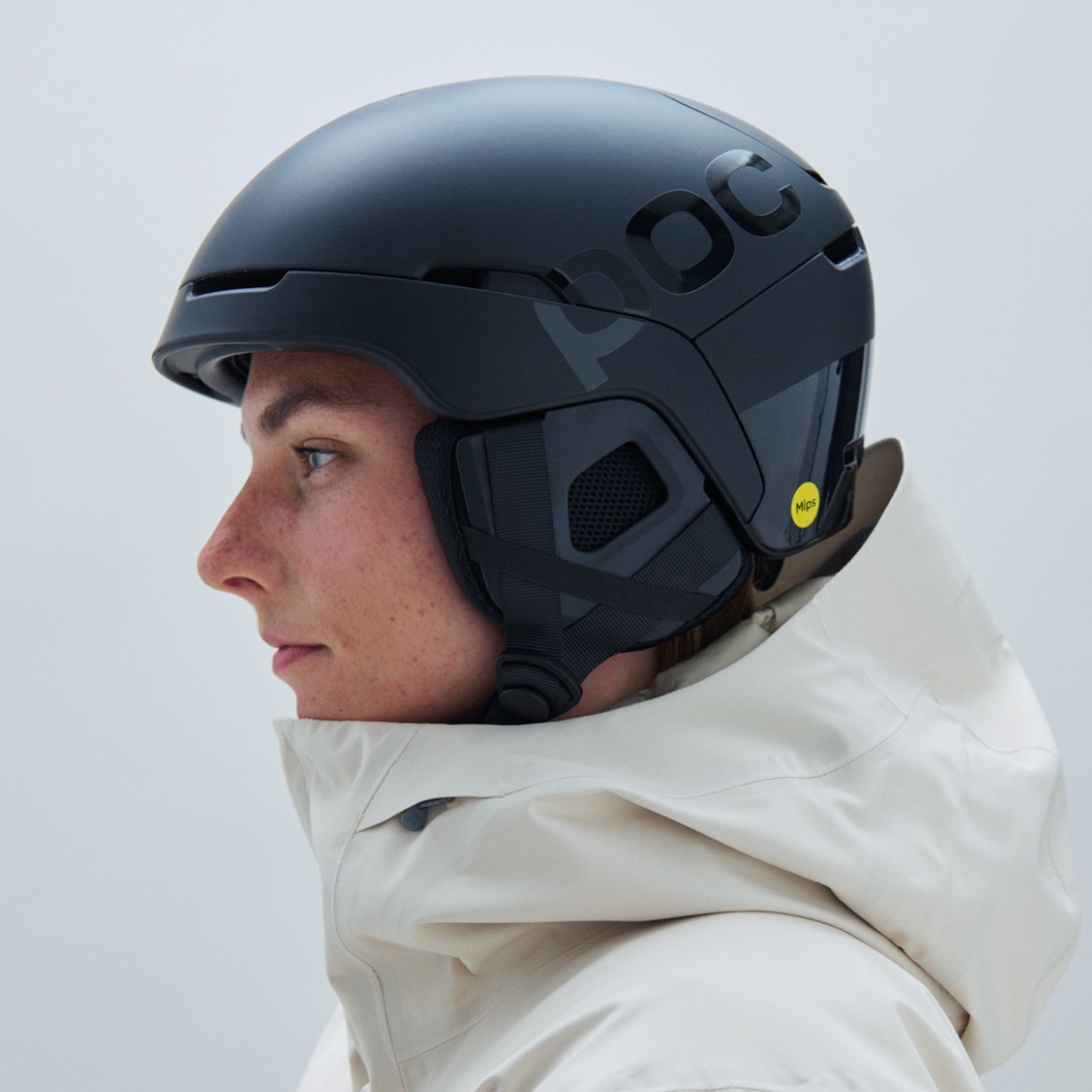
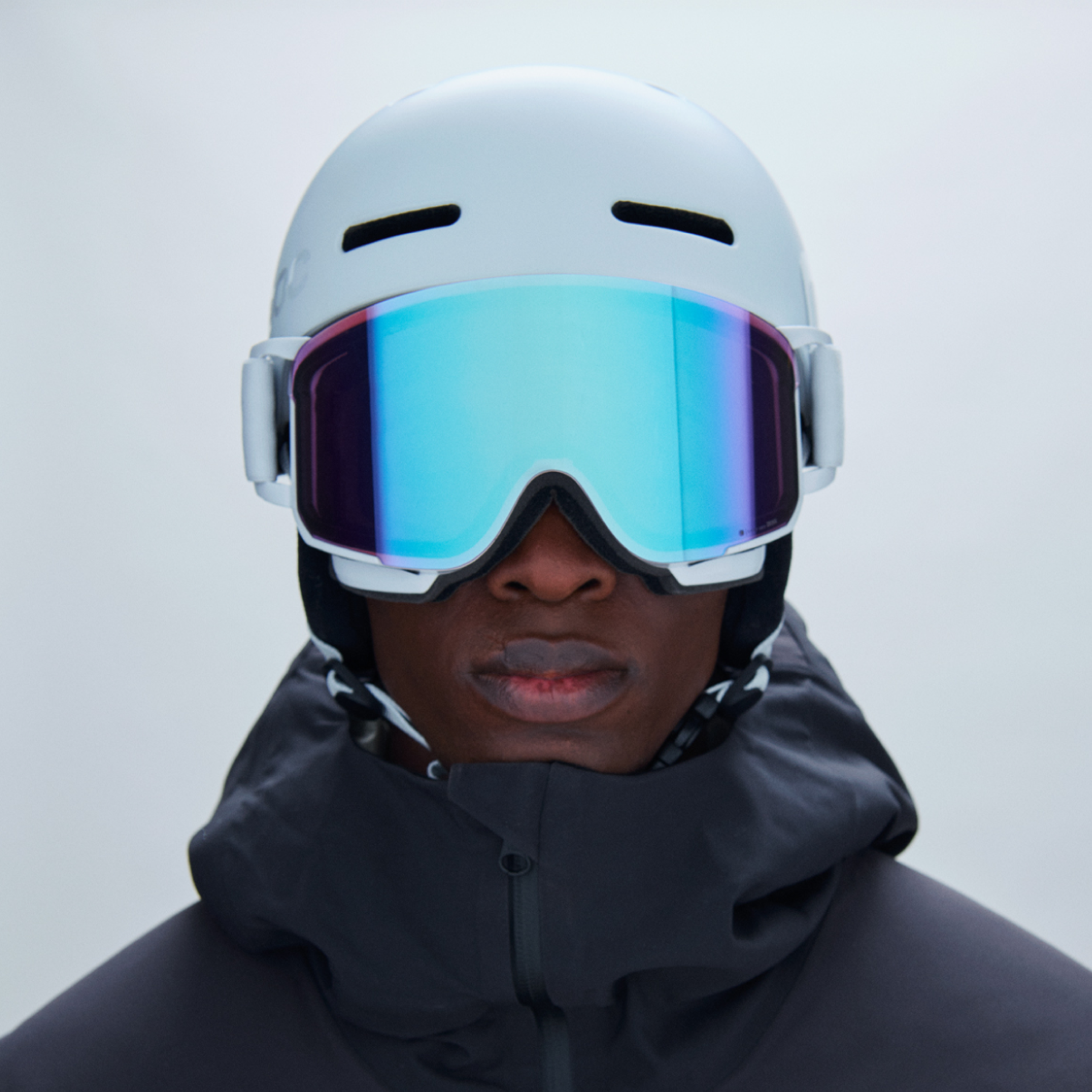
A helmet should be snug but not tight. For the right fit with goggles, it should not come too far down your forehead.
HOW SHOULD A HELMET FIT?
A ski or snowboard helmet should always be comfortable. It should fit close to your head without moving too much, but should not feel tight. You should be able to turn your head upside down with the helmet unbuckled and it should stay on yourhead.
All our helmets feature adjustable sizing, whether with padding or a turnwheel adjustment system.
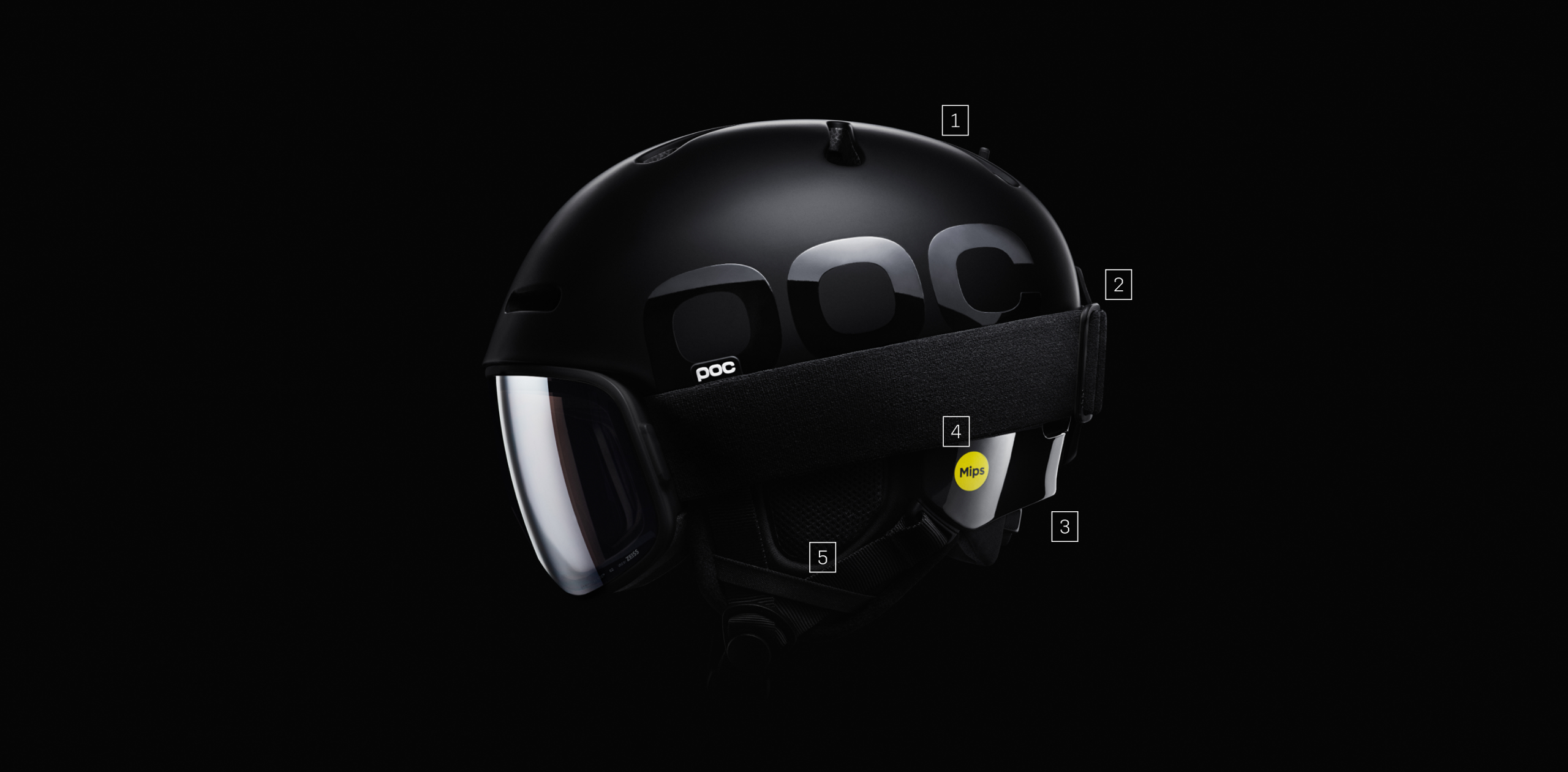
Typical features on POC helmets include: 01 Adjustable ventilation 02 A goggle clip to keep goggles secure 03 Adjustable fit system 04 Mips rotational impact protection 05 Removable ear pads
HELMET TYPES AND FEATURES
Different types of helmet include different features to offer the best protection for a particular type of skiing.
Race helmets feature a thicker shell, have minimal ventilation and are constructed using a multi-impact liner.
Freeride and resort helmets are lighter and better ventilated, making them more suited to longer periods of use. Ear pads also tend to be removable, for more comfort across a broader range of temperatures. Helmets tailored for use in the backcountry also feature extra technologies like RECCO and NFC Medical ID for enhanced safety in wilderness areas.
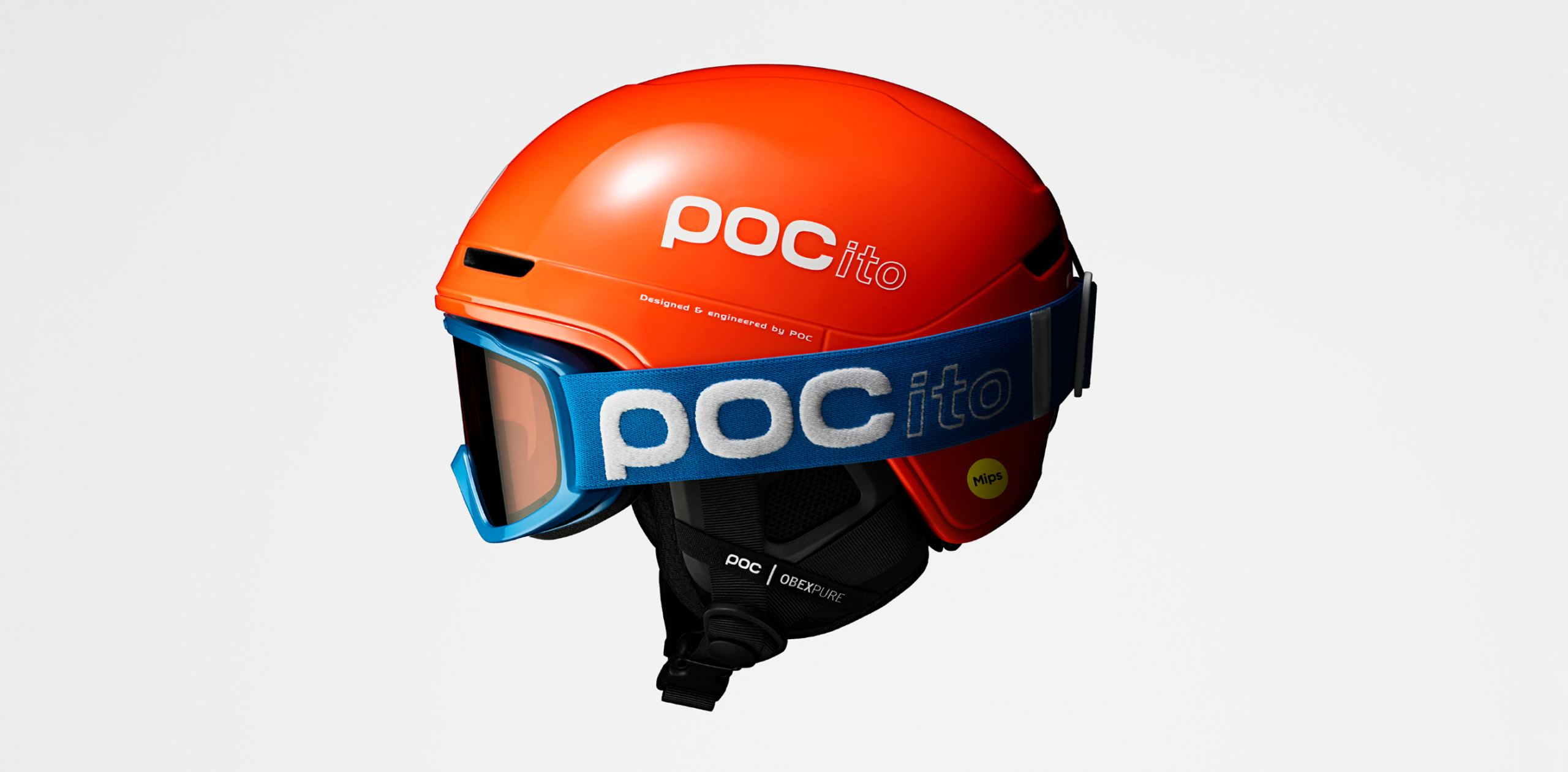
The bright colours and reflective details of the POCito helmets for children make it easier to see young skiers and snowboarders.
If choosing a helmet for a child, consider factors like the weight of a helmet, and choose a model with bright, fluorescent colours so that young ones can be more easily seen on the mountain.
DISCOVER THE RIGHT HELMET
To find the right helmet for you, explore our different helmet models below, sorted by helmet type.
